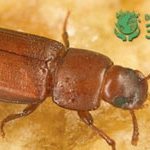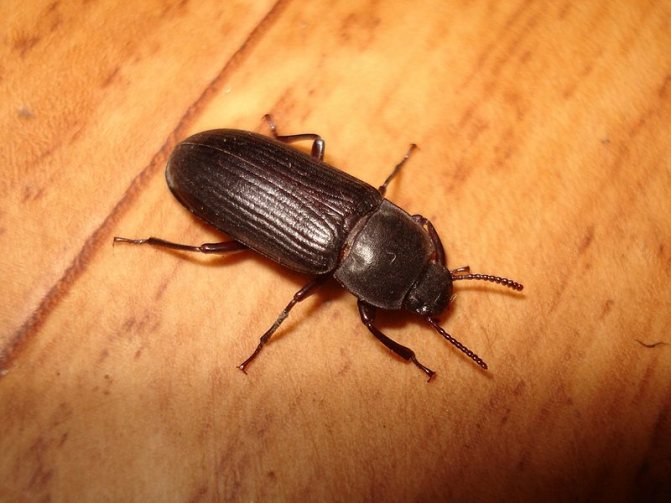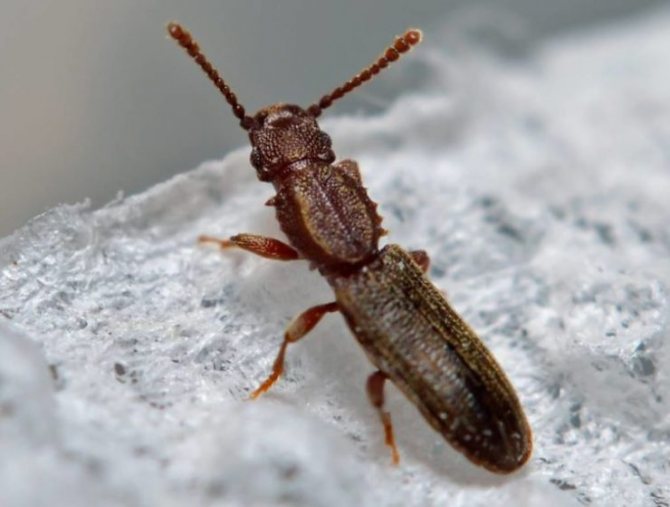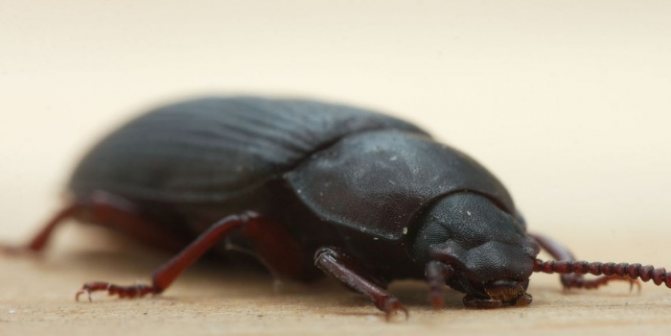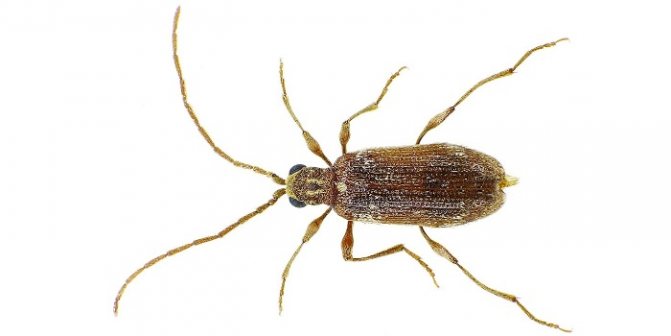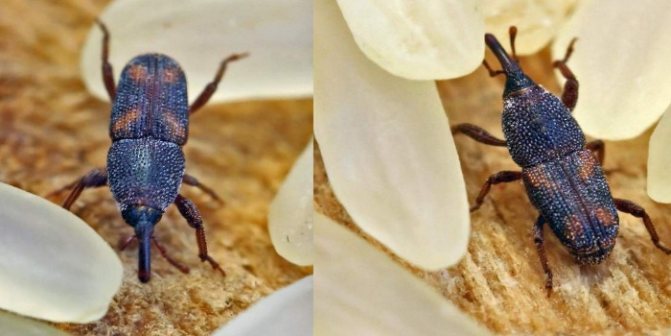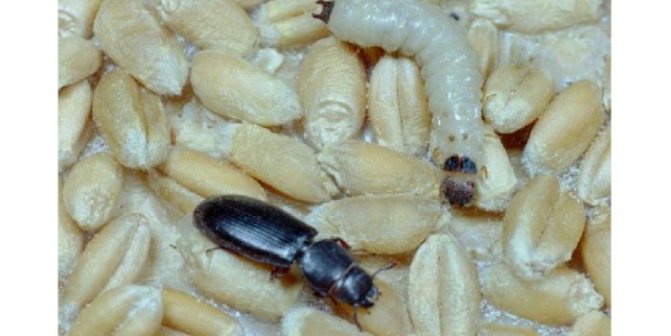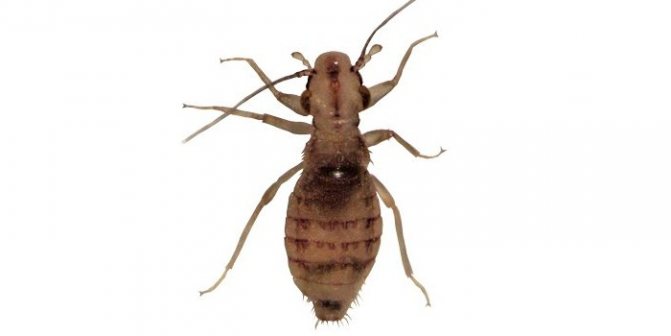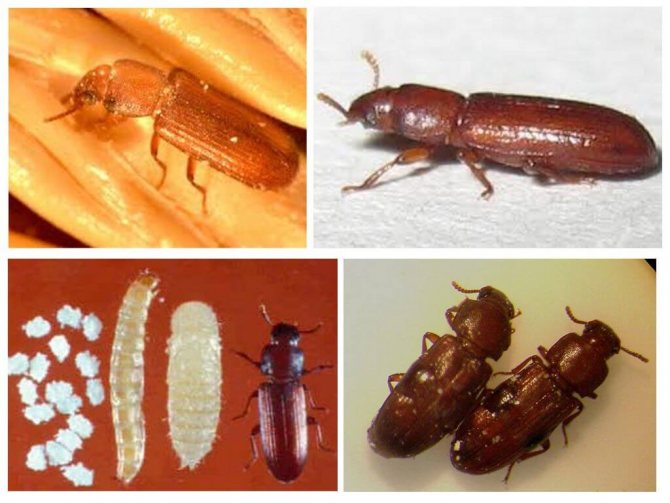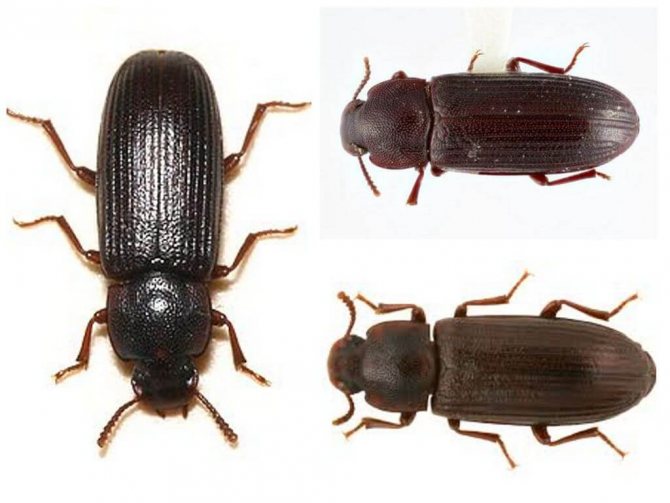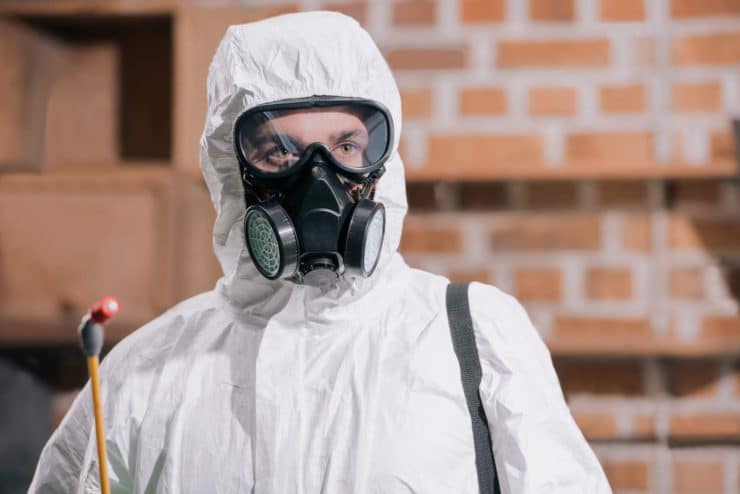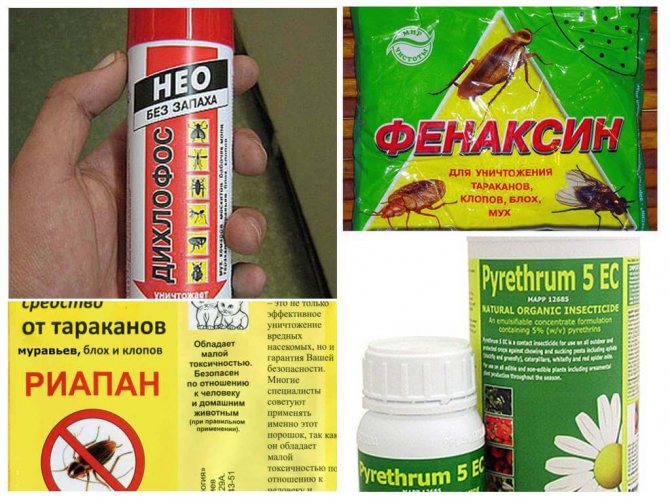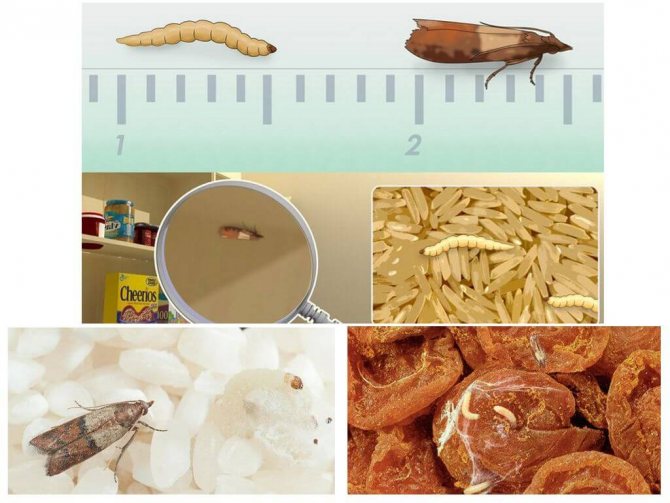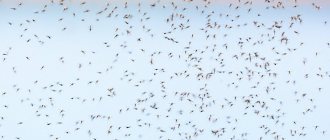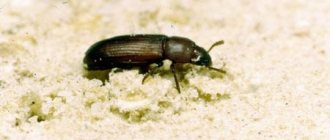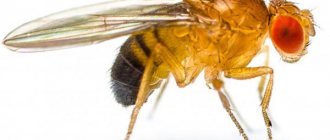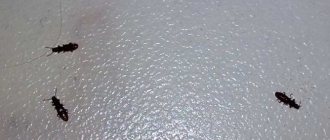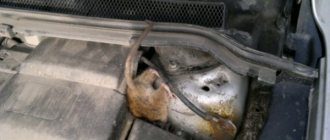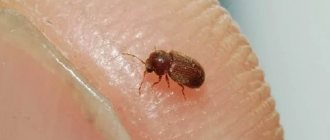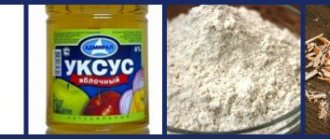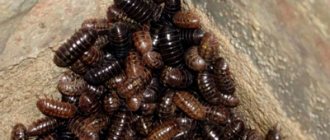Food supplies in the kitchen are a favorite treat of many insects. In our article, we will focus on one of these pests - the flour beetle. Even the cleanest housewife can face the appearance of this small bug in the kitchen. Not only cereals, but also flour, dried fruits, starch, and pasta are susceptible to the invasion of both adults and their larvae. This list can also be continued with cocoa powder, ground coffee and tea. An intruder can also enter animal feed in the form of whole or crushed grain mixtures. To better understand who we are talking about, below is the flour beetle in the photo.
Appearance
The flour beetle is a representative of the darkling beetle family, the size of most of the bugs is no more than 3-5 mm (however, there is also a large beetle, it will be described separately). The distinguishing features of insects are as follows:
- The body is oblong.
- The color is dark brown with a reddish tint.
- Small antennae.
This pest is found in almost all regions of the country, has a rapid reproduction rate, one female in her short life is able to lay about a thousand eggs.
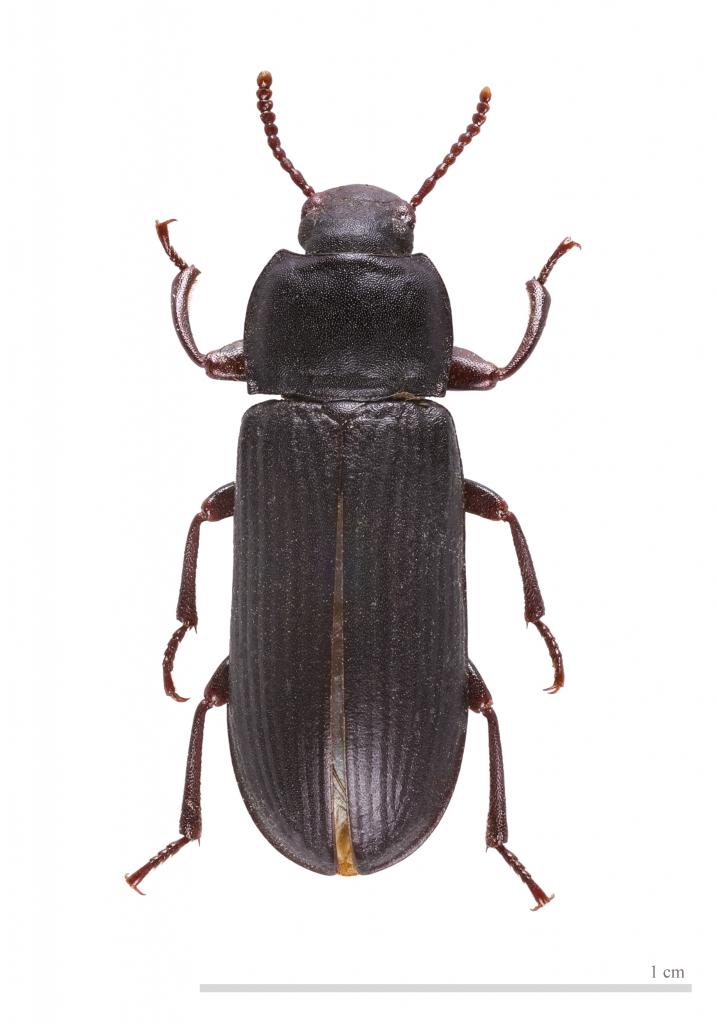
Varieties
These unpleasant beetles, which become a real problem when they get into a human dwelling, can be represented by various species, information about which is displayed in the form of a table.
| Name | Large flour beetle | Small | The black |
| Brief description of the imago | Flat body up to 2 cm long, black or brown, the lower part is reddish | The average body length is 3.5 mm, despite the presence of wings, it is not capable of flight. Possesses special glands that scare off enemies with an unpleasant odor | The body is black, shiny, up to 5.5 mm long, the color of the legs and abdomen is somewhat lighter |
| Brief description of the larva | Cylindrical, up to 2.5 cm long, dirty yellow color. There are small legs with claws, the organs of vision are not formed | The body is up to 6 mm long, with short hairs. The head is flat | The flat body, up to 1.3 mm long, is covered with hairs. Color light brown |
| Chrysalis appearance | White with a pair of small spikes on the back ring | Light yellow, shiny, with tiny growths in the back of the abdomen | Dirty yellow shade, there are also growths-tubercles |
The larvae of all these beetles are usually called mealworms, since they are most often found in flour or cereals, rendering them unusable.
How does the flour beetle enter the home
Pests enter human habitation in several ways. Most often, beetles enter houses through windows. Pests also settle in attics, in which case it is not difficult for them to get inside the dwelling where their source of food is located. Also, beetles are brought into the house from public places, markets and shops where you can buy contaminated dry food. This is why outlets should be chosen carefully and purchased products should always be checked.


Where pests live
The flour beetle is one of the common insects, therefore it is found almost everywhere where there is food:
- Grain storage.
- Pasta factories.
- Barns.
- Elevators.
- Apartment kitchens.
They are found in pantries, on balconies - in those places where it is customary to store food. They love stale food, so most often they settle where a person rarely looks.


Harm inflicted
The flour beetle, the photo of which is presented above, is a very harmful creature that can ruin all stocks of cereals and pasta. In addition, they often eat dried fruits: raisins, dried apricots, prunes, forcing the housewives to throw out the food in whole bags.
Having found a larva or a beetle, one should ruthlessly get rid of the groceries, since it already contains insect excrement, parts of their chitinous cover, and the product is saturated with an unpleasant odor.
Control methods
A flour beetle can do a lot of trouble in an apartment. How to get rid of this tiny pest? There are several ways.
The easiest way is to quickly throw away all infected cereals, flour and pasta, check if there are any larvae or adults left in the boxes. After that, rinse all the shelves and walls with a vinegar solution (for 1 liter of water, take 2 tablespoons of vinegar 9%). Window sills, door frames and areas near the ventilation are also recommended to be treated with such an infusion so that the flour beetle does not move from neighbors.


Banks in which contaminated cereals were stored must be boiled.
If the number of pests is already very large, you should use more radical means: pour a bait of equal amounts of borax, powdered sugar and flour in the kitchen cabinets, on the shelves of the pantry or other places where there is a tormentor. If necessary, the procedure is repeated after 10 days.
Pulmonary worms in cats
For many years unsuccessfully fighting PARASITES?
Head of the Institute: “You will be amazed at how easy it is to get rid of parasites just by taking every day.
According to unofficial statistics, every third family in Russia has pets, more than half of them are cats. These cute creatures, just like people, can suffer from various diseases, including worms. Symptoms of worms in cats at the first time after infection may not have a pronounced clinical picture, but after a certain period of time has passed, the animal usually loses weight, has poor health and stomach upset. Today we will talk about the symptoms of pulmonary worms in cats.
Helminthiasis in cats
One of the most common diseases in cats is helminthiasis - infection of an animal with worms. Today, veterinarians have several types of helminths. If worms are found in cats, it is first of all important to correctly determine the type of parasite that has settled in the animal's body, which will allow you to correctly prescribe a course of treatment.
To get rid of parasites, our readers successfully use Intoxic. Seeing such popularity of this tool, we decided to offer it to your attention. Read more here ...
Parasites that have penetrated into the body of an animal, which can be found almost everywhere: in grass, raw foods, water, etc., pose a potential danger not only to the health of the cat, but also to its owner. Even if an adult cat or kitten is constantly in the house, this does not exclude their infection with helminth eggs, which can be brought in by dirty shoes, clothes or even unwashed hands.
Whereas when microbes enter, the immune system reacts with the release of antibodies that can block the infection. In connection with this state of affairs, there is still no vaccine against helminthiases, although experiments in this direction are underway. Sometimes they are not unsuccessful.
Where do worms live in a cat's body?
The signs of the disease when parasitized by one or another type of worms in cats is largely determined by the site of localization of the invasion. And there are a lot of these places in the body.Worms can settle and further destroy the balance of the living system in almost any organ. They can be found in: intestines; stomach; liver; lungs; kidneys; bladder; and even in the heart or eyes.
In rare cases, helminths can be located in organs and tissues of the host unusual for their biology, then they speak of "perverted localization". With this form of the disease, the parasitic worm for the most part cannot go through the full course of development, but the body still experiences some signs of discomfort.
Chemicals
Consider how to get rid of the flour beetle with the help of the achievements of the modern chemical industry. It is possible to use the following simple and inexpensive means:
- Dichlorvos. Before work, put on a respirator, after which the balloon with the agent should be shaken, and then - sprayed on those places where the bug, as well as cracks and plinths, from a distance of about 30 cm, spraying simply "into the air" will not give an effect.
- Riapan. This poison has low toxicity and is safe for humans and pets. The product is completely ready to use, so it should be applied in a thin layer to those places where the mealworm was found: drawers, shelves, as well as at baseboards and crevices. After 2-3 weeks, the powder should be removed, if necessary, repeat the treatment. The consumption rate is 10 g of powder per 1 m2.
These drugs can get rid of the pest; they can be purchased at a specialized store.
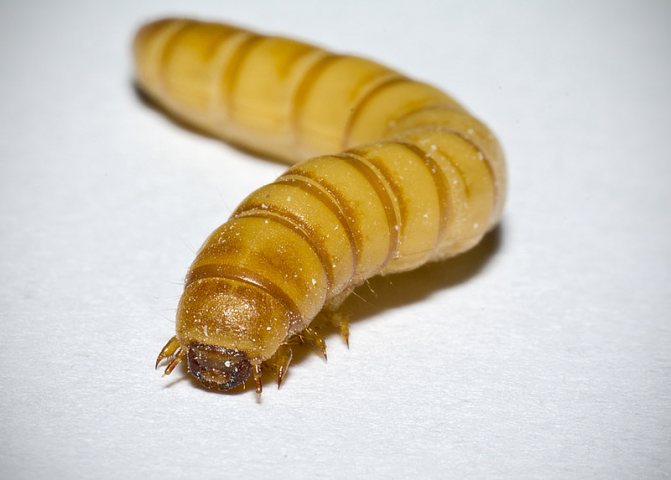

Preventive actions
We looked at measures to combat the small flour beetle. However, any problem is easier to prevent than to solve. Therefore, 2-3 peeled cloves of garlic should be placed in each bag with grain or cereals - beetles cannot stand their smell. For storing such products, you should use jars with tight-fitting lids. On the shelves you can lay out bay leaves or lavender sachets, insects also do not like these scents.


Sometimes larvae or adult beetles can be brought home along with purchased grain or cereals, which were stored in violation of technology. In this case, if the seller does not inspire much confidence, the purchase should be placed in the freezer for 4 hours, the larvae, if they were there, will die.
Prevention of reappearance
There are certain preventive measures to prevent the appearance of unpleasant insects:
- Purchase groceries as needed. Long-term storage contributes to the appearance of pests and loss of taste.
- Use a dry, cool room to store cereals, with good ventilation.
- Storage of bulk products in glass containers with tight lids, perforated plastic bags. Flax bags and metal containers are also suitable for this purpose.
- In winter, store cereals on the balcony, loggia.
- Compliance with the shelf life of products. For example, millet groats are stored for no more than 3 months, buckwheat and rice - up to 6 months, flour and dried fruits - 1 year.
Important! If pests are found in a package with cereals, then you need to immediately check the stocks, carry out a thorough cleaning of the house. A solution of baking soda, salt and vinegar is suitable for this purpose.
There are no ideal ways to remove bugs. It is impossible to be sure of the good faith of the manufacturer of cereals, even if vacuum packaging is used.
Therefore, the key to preventing the appearance of beetles is the regular cleaning of the kitchen with the use of disinfectants, inspection of food stocks, and compliance with the terms of savings.
Methods for cleaning cereals
Sometimes there are situations when it is not possible to throw away cereals contaminated with flour beetle, for example, if the family is very poor or lives in a disaster zone and cannot buy new buckwheat or rice. In this difficult situation, you can use this way:
- Try to sort out by hand, or at least extract those insects that are visible to the naked eye.
- Pour the groats into a cotton bag and place them in the "Freeze" compartment for a day. Low temperatures (below 0 ° C) are fatal for larvae and adults.
- Exposure to high temperatures will also help get rid of the tormentors; you should pour the cereals onto a baking sheet and place in an oven preheated to the maximum for 60 minutes.
However, such events are not able to save flour, so, unfortunately, it will still have to be thrown away.
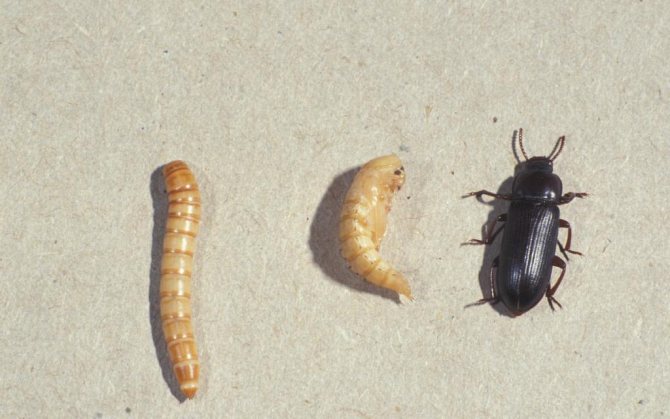

What black beetles can be found on the street?
If everything is clear with domestic pests, then there are many insects living on the street, in the garden or vegetable garden. They can get into the house by accident, through a door or an open window, but they will not do much harm. There are many interesting beetles, large and small, but not all of them are pests.


Beetles on the street:
- Chafer;
- pennywort;
- ordinary T-shirt;
- kravchik;
- bladder shirt;
- soldier bug;
- ladybug;
- ground beetle.
In the summer cottage, harmful insects are more often present, which spoil the planting and cause serious damage to the crop. You can deal with them both with the help of chemicals and with more gentle methods. Gardeners recommend attracting beneficial insects and beetles and scaring off harmful ones, for which they plant mint, sweet clover, tansy and other aromatic herbs near the house.
Loading ...
Interesting Facts
We offer you to get acquainted with a selection of interesting facts about the flour beetle:
- This insect, harmful to housewives, is loved by fishermen, since its larvae are excellent bait. Some even specially breed pests for themselves and for sale.
- Poultry, turtles and geckos also eat mealworms with great pleasure.
- Pests can eat not only grains and pasta, but also meat. So, for some time they are able to turn a bird's carcass into a skeleton.
- The large flour beetle is recognized as a quarantine object in Cuba.
- The larva of the pest, hitting the direct rays of the sun, dies after 15 minutes.
- In the absence of food, pests can begin to eat each other.
Such is the flour beetle - a pest that has spread almost across the globe, causing serious harm to food supplies. Fighting it can become lengthy and difficult, so it's best to take prevention seriously and prevent it from occurring.
What are harmful and dangerous insects
Is the Khrushchak beetle dangerous for humans, such a question arises for many who found this flour pest in their kitchens. The winged insect is capable of thoroughly spoiling bulk products, leaving its excrement and particles of larvae skins in them. It is not recommended to use contaminated cereals or flour.
Note Do not risk your health and eat food contaminated with insects. This is especially true for children and people suffering from gastrointestinal diseases.

